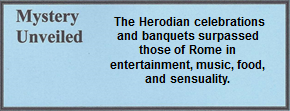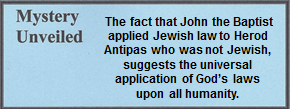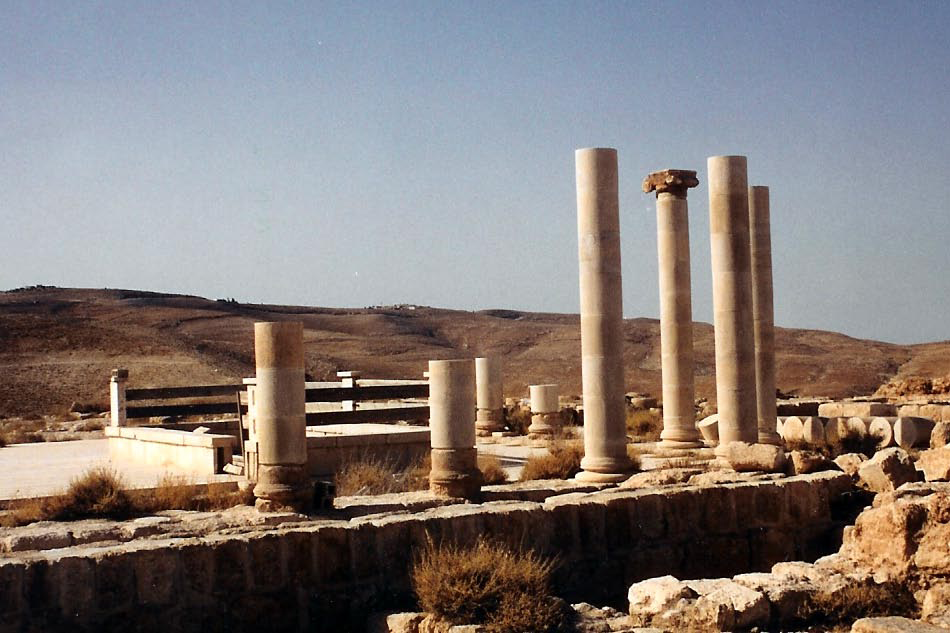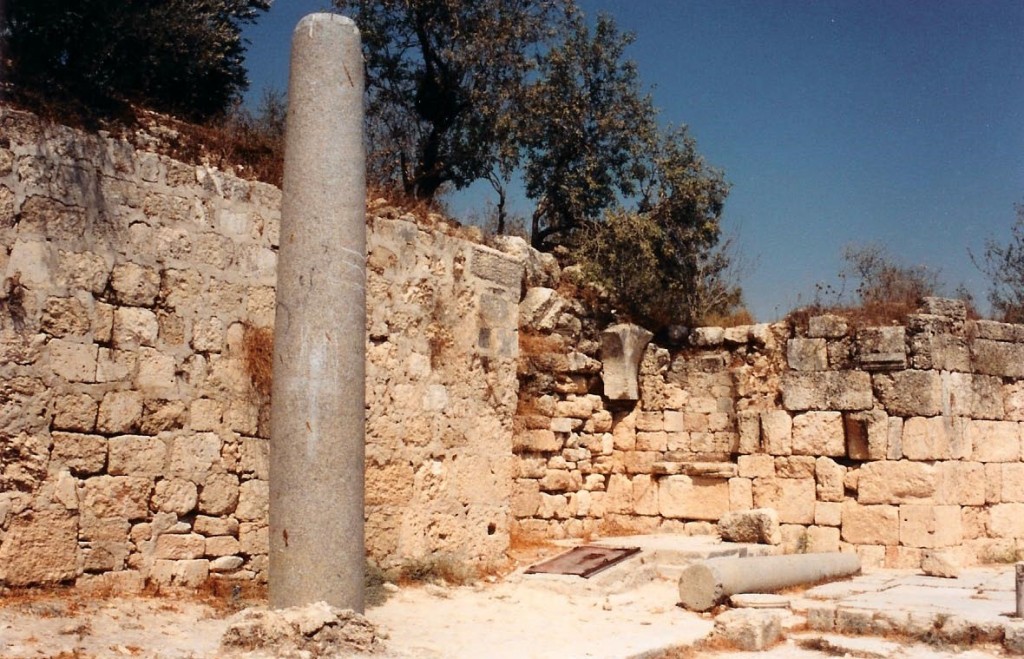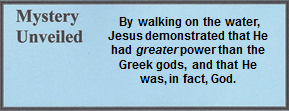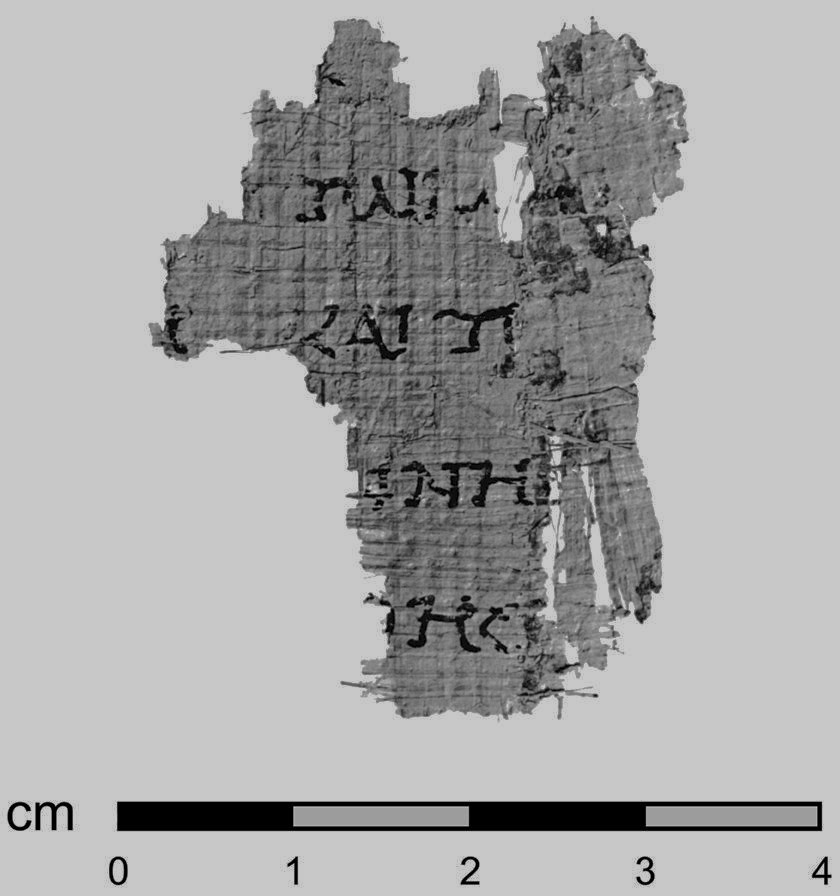10.01.13 Mk. 6:35-36; Jn. 6:5-7; Lk. 6:13; Jn. 6:8-9; Mk. 6:39-43; Jn. 6:14; Mk. 6:45; Jn. 6:15 (See also Lk. 9:12-17) The Sea of Galilee near Bethsaida.
FIVE THOUSAND FED
Mk. 35 When it was already late, His disciples approached Him and said, “This place is a wilderness, and it is already late! 36 Send them away, so they can go into the surrounding countryside and villages to buy themselves something to eat.”
Jn 5 Therefore, when Jesus looked up and noticed a huge crowd coming toward Him, He asked Philip, “Where will we buy bread so these people can eat?” 6 He asked this to test him, for He Himself knew what He was going to do.
7 Philip answered, “Two hundred denarii worth of bread wouldn’t be enough for each of them to have a little.”
Lk. 13 “You give them something to eat,” He told them.
Jn. 8 One of His disciples, Andrew, Simon Peter’s brother, said to Him, 9 “There’s a boy here who has five barley loaves and two fish—but what are they for so many?”
Mk. 39 Then He instructed them to have all the people sit down in groups on the green grass. 40 So they sat down in ranks of hundreds and fifties. 41 Then He took the five loaves and the two fish, and looking up to heaven, He blessed and broke the loaves. He kept giving them to His disciples to set before the people. He also divided the two fish among them all. 42 Everyone ate and was filled. 43 Then they picked up 12 baskets full of pieces of bread and fish. 44 Now those who ate the loaves were 5,000 men.
Jn. 14 When the people saw the sign He had done, they said, “This really is the Prophet who was to come into the world!”
Mk. 45 Immediately He made His disciples get into the boat and go ahead of Him to the other side, to Bethsaida, while He dismissed the crowd.
Jn. 15 Therefore, when Jesus knew that they were about to come and take Him by force to make Him king, He withdrew again to the mountain by Himself.
It was springtime in A.D. 29, as John 6:4 indicates that the Passover was near. So this miracle occurred at the beginning of the last year His ministry. By now His popularity was incredible, and after this miracle, it would be even more so.
The disciples realized that there was neither enough food to feed the massive crowd nor enough money to buy food.[1] It is doubtful that even if they did have enough money, there was any place where such a large quantity of food could be purchased with limited notice. The disciples looked at solving physical needs in a physical manner, and thereby, were forced to be completely dependent upon Jesus for a miracle. It is interesting that Jesus asked Philip where bread could be purchased. Philip was from Bethsaida, a village known for excellent bread.
The Bread of Life Discourse can be divided into three parts.
- The Jews reflected upon the time when their forefathers were given bread from heaven. Jesus had to remind them that it was God, not Moses, who had fed them.
- Jesus told the gathered assembly that He was the Bread who came down from heaven (Jn. 6:22-40). With this statement, He revealed His incarnation.
- Jesus stated that His sacrificial and atoning death would be as the “bread” to be broken in the fleshly body.[2] Herein the imagery of the future communion begins to emerge.
Today at Tabgha, there is a mosaic commemorating the miracle of the multiplication that was discovered in the ruins of a Byzantine church.
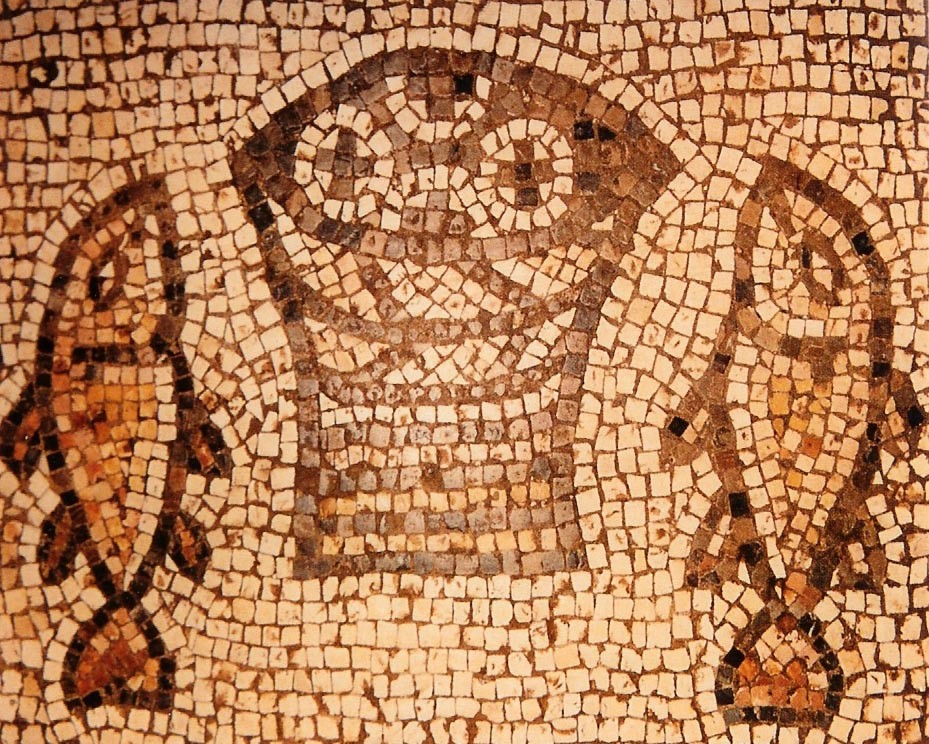
10.01.13.A. MOSAIC OF THE MIRACLE OF THE MULTIPLICATION. The church with this mosaic commemorates the miracle of Jesus at a so-called traditional site near the village of Tabgha. Count Yosipos, a Jewish believer, built a church here in 350, which was later destroyed in 614 by the Persians. Not until 1932, was it rediscovered by German archaeologists and later rebuilt. Only four loaves are shown and fish in the Sea of Galilee do not have dorsal fins. Photograph by the author.
This miracle reflects upon two similar miracles of the Old Testament. However, since the Jews have a history with God and His care for them, this miracle also reflects upon two similar miracles of the Old Testament.
- Elisha’s miracle was that he fed a hundred men with only twenty loaves of barley bread (2 Kg. 4:42ff). Those loaves were circular, flat and thin, similar to modern pizza dough bread. Twenty loaves may have been enough for four or five men, but most certainly not for a hundred. Elisha prayed that these would be multiplied. The Lord provided enough for everyone and there was some left over.
- The miracle of Moses was that God’s people were wandering in the desert, every day God supplied them with fresh food (Ex. 18:25). Just as Moses, the first redeemer, had given bread (manna) from heaven to the people, so Jesus gave them bread as they listened to Him speak. However, the manna by Moses fell from the sky and after a day or two, it perished. Jesus said that He was the true Bread from heaven that only the Father could give, and in fact, He was precisely that!
This miracle by Jesus demonstrated that He was the bread of life for the Jews. It was both a reflection and a projection. It was a “projected reflection” also known as a “type and shadow” of a shepherd feeding his sheep upon the green grass. The prophets Ezekiel (34:23-31) and Isaiah (25:6-9) mentioned a future event when God’s people will enjoy a feast with Him. By performing these miracles, Jesus performed a “foretaste” of that Messianic feast that was spoken of and is yet to come.
As such, Jesus clearly stated that His position was far higher than that of Moses whom the first century Jews had held in a near god-like position. There is also an implication with the statement “from heaven,” and that is, that what Jesus said is beyond the power of Satan and his demons.
“You give them something to eat.” The disciples now had become an integral part of the miracle. As Jesus fed both physical and spiritual hunger, He was training His disciples to do the same.
“Five barley loaves.” The phrase literally means five small barley loaves. Barley was known as the poor man’s wheat, and was commonly used for cattle feed.[3] This demonstrates that Jesus was in fact ministering to the very poor of the nation. John recorded this to connect with the miracle of Elisha, who also multiplied loaves of barley bread.
“Two fish.” The phrase literally means two small fish. The Greek word for the small fish is opsarion, which was eaten raw, pickled, or salted, but always with bread.[4] It is commonly believed to have been the popular sardine, as the Sea of Galilee has the only freshwater sardines in the world. Pickled sardines were well-known throughout the eastern Roman Empire; soldiers, shepherds, everyone carried some in their pockets for an afternoon meal or snack.
“Green grass.” This seemingly unimportant piece of trivia is significant in that grass is green for only a few months of the year. In the winter when it rains it is too cold for the grass to be green and the spring is relatively short, but that is basically the only time when grass is green. John also recorded (6:4) that this miracle took place near the coming Passover (March-April) when the weather would have been warm enough for an outdoor meeting.
“In ranks of hundreds and fifties.” There was a specific reason Jesus requested the people to be seated in such groups. This was not a lesson in administration as much as it was a reflection of what their forefathers had done in the Sinai Desert (Ex.18:25; Num. 31:14).[5] The unspoken message was profound and most certainly was the subject of many conversations. By such subtle connections to significant events of the past, Jesus made profound statements of His identity.
“He blessed and broke the loaves.” Some translations read that Jesus blessed the food, but the question is, “Would an orthodox Jew have asked God to bless the food?” This is the Christian practice. Why is there a difference in these prayers? In the early 1600s, when King James of England had the Bible translated into English, his translators had some difficulties with the conveyance of meaning into English. In the Greek language there is no direct object that follows a verb. Therefore, when they came to words such as “broke,” “blessed,” or “gave,” they added the word “it” behind the verb. This changes the blessing from being directed toward God and redirects it at a subject. Once the King James translators accepted this practice, years later other translators were forced to follow the same pattern or be criticized for changing Scripture.
Most Bibles read in verse 16 that Jesus took five loaves of bread and two fish and blessed them, and then He broke them, after which He gave them to His disciples to distribute to the multitudes. A careful look at the Greek meaning will render that Jesus blessed for them the bread, meaning He blessed God for the food, after which He broke and gave it to His disciples to distribute to the people.
Therefore, it is easy to understand how the focus of our prayers may be misdirected from the great Creator to various objects of His creation. No orthodox Jew, including Jesus, would ever pray as most Christians do today. The question that obviously follows is whether our prayer language needs to be corrected. The answer may be more of a forced change of habit than a theological issue.
Historically, a Jewish person prays a blessing upon God before and after a meal.[6] In essence, Jesus prayed twice at mealtime. The second prayer is based upon Deuteronomy 8:10. The contemporary prayer of an orthodox Jew may be worded slightly different from the first century counterpart, but it is similar to this:
“Blessed is He who brings forth bread from the earth.”
Jewish Prayer Prologue[7]
Some scholars believe this phrase was changed around 500 A.D. when the Talmud was written to read as follows:
“Blessed are you, O Lord, King of the universe who brings forth
bread from the earth.”
Jewish Prayer Prologue[8]
The significance of the miracle is this: Jesus, who became known as the “Bread of Life,” performed a miracle with enough leftovers to fill twelve baskets. The number twelve was always significant to ancient Israel as representative of the twelve tribes. The miracle reflected upon the days of Moses when manna fell from heaven every day, but their forefathers didn’t have any leftovers (Ex. 16; Num. 11). Now Jesus was, in effect, repeating the desert miracle for the descendants of those twelve tribes with an abundant amount of food leftover. Those in attendance could not miss the connection between Moses with his manna from heaven and this profound miracle. Jesus is the abundant bread of life for the Jewish nation.
The term blessed in Hebrew is baruk and in Greek is makarious. The word means to praise God with a sense of happiness and joy upon man.[9] More specifically, it refers to a quality of spirituality that is already present.[10] Therefore, the blessing that is commonly prayed today in orthodox and messianic congregations is of the Talmudic tradition. It has also been the tradition to bless God for His provision before and after eating, a custom that originated in Deuteronomy 8:10 that says, “When you have eaten and are satisfied, you shall bless the Lord your God for the good land, which He has given you.” The “good land” is associated with “a bountiful supply of food.” However, note that it is not the food or the land that was blessed, but God. Since the land was so intricately a part of the Jewish culture, this verse was used as a justification to bless God for nearly every other occasion as well. In the recorded Oral Law is this passage, “Anything that is enjoyed requires a blessing.”[11] Such prayers would generally begin with something like this: “Blessed is He who….” So by the first century, the Jews even blessed God for their ability to go to the bathroom, at which time they prayed,
“Blessed is He who formed numerous orifices and cavities. It is revealed and known before the throne of your glory that if even one of them should be opened or if even one of them should be obstructed, it would be impossible to exist and stand before you.”
Jewish Prayer Prologue[12]
But the focus is still to bless God and not the object. When one had to endure calamity or hardship, he would pray a prayer to bless the great and true Judge of the universe (possibly with a touch of revenge in mind). It is clear that the Jews blessed their God and not their food or objects, so the obvious question arises: Why do Christians bless their food and a variety of objects as well as people, but seldom bless God?
“Then they picked up 12 baskets.” This seemingly unimportant bit of trivia is, in fact, highly important. When Jesus performed the miracle in this Jewish community, there were 12 baskets full of leftovers after everyone was finished eating. When Jesus performed a similar miracle in the Gentile region to the east there were 7 baskets full of leftovers. The 12 baskets in Jewish community was representative of the 12 Jewish tribes and the 7 baskets in the Gentile community were representative of the 7 Gentile tribes, descendants of the Canaanite tribes who originally lived there.[13]
These 12 baskets, called kophinos (2894), were smaller narrow-necked, flask-shaped baskets,[14] and were commonly used when traveling. They were much smaller than the huge baskets, called spuridas or sphurides (4711), or sargane (4711) [15] that were filled at the feeding of the 4,000.[16] Jesus again demonstrated His divine attributes in the role of Jehovah Jirah – our Lord God who is our Provider.[17]
Decimus Iuvenalis (c. A.D. 55-127), more commonly known as Juvenal, authored sixteen satires in which he ruthlessly criticized the moral vices and corruption of Roman society. He likewise degraded the Jewish people, but a point of interest to this study is that he said that when the Jews traveled, they did so with a basket and a truss of hay.[18] Note his words when he said,
… [the] Jews who possess a basket and a truss of hay for all their furnishings.
Juvenal, Satire 3:14[19]
No sooner has that fellow departed than a palsied Jewess, leaving her basket and her truss of hay, comes begging to her secret ear;
Juvenal, Satire 6:542[20]
Clearly, the kophinos was a small traveling basket, ideal for a light lunch and some personal items for anyone traveling.
“Now those who ate the loaves were 5,000 men.” Literally, “those who had eaten were five thousand men.” It was not unusual for a census to count only men. However, even the ancients realized that if there were so many men present, the total number of people must have been huge. Families at that time were considerably larger than today and, therefore, when including women and children the total could well have been in excess of 20,000 as a conservative estimate. This indicates, along with the 4,000 fed later, that the ministry of Jesus had an immense following. The largest nearby villages were Capernaum, Chorizim, and Bethsaida, which some archaeologists have determined had only a population between two and three thousand each.[21] Therefore, the remainder of the people came from other fishing villages that encircled the sea or traveled a great distance to see and hear Jesus. However, a new capital called Tiberias was under construction that required a large labor force. Some scholars have proposed that if the miraculous event took place near the end of the day, many laborers and craftsmen coming off from work would have been there. If that was the case, then the number of women and children would have been rather minimal.
Years later, when the early church celebrated communion, the believers had bread and fish at their communion meals, along with wine. Since Jesus had a Passover-communion meal and not only the “elements” of bread and wine/grape juice, early Christians had a menu that reflected this miracle.[22]
“Take Him by force to make Him king.” Clearly, the people were at a point of desperation. They believed their long-awaited prophet had finally come and they wanted make Him their political-messiah, even by force if needed. They looked to Jesus as a miracle worker rather than a spiritual Savior, and wished to be healed and fed rather than have communion with His Spirit. What irony! Usually Jesus had to watch out for the religious leaders, but now He had to watch the common people as well. Social pressure was upon Him and He had to retreat to the mountain to pray. With this incredible popularity, it is easy to understand why the Sanhedrin and Herodians were also observing His every move.
In Luke 9:12ff is the narrative of the feeding of five thousand along the shores of the Sea of Galilee.
The site was known in biblical times for its seven hot springs in and nearby the lake, thereby making it a popular winter fishing area. Since the Crusader Period, pilgrims were told this site was the actual place of the miracle of the loaves and fishes, due to great difficulty of crossing a swamp to get to Bethsaida. Only since the twentieth century have roads made comfortable passage possible, but the tradition remains.
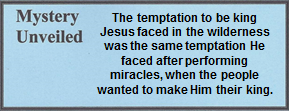
It should be noted that the words “city” and “village” at times are interchangeable. Mark calls Bethsaida a “village” (8:23-27) while Matthew and Luke refer to Capernaum, Gadara, and Bethsaida as “cities.”[23] Modern students might conclude that the gospel writers saw very little significance between the two words, but in reality, each was the size of a city but had the character (meaning government) of a village.[24]
Finally, tourists who visit the ruins of the so-called Bethsaida today are surprised to find the site to be more than a mile from the Sea of Galilee and on top of a hill. Obviously, it does not make sense to have a fishing village so far inland. Some scholars believe that the explanation is in the past two thousand years, there have been many earthquakes that changed the face of the Jordan Valley.[25] In addition, the ever winding Jordan River that enters the Sea of Galilee in the north and exits in the south had changed the delta of the inlet. Therefore, some geologists say, it is not surprising that the northern shoreline has changed over time.[26] However, what they have not addressed is that in the 1980s, after a lengthy drought, an archaeologist by the name of Mendel Nun discovered fifteen fishing harbors around the perimeter of the Sea of Galilee.[27] If earthquakes and geological changes caused such a massive restructuring of the land at Bethsaida, then how could these fishing harbors have been so well preserved at a natural water level. Furthermore, the reason the harbors have been hidden in recent decades is that in the 1930s, a dam was built at the lower end of the Sea of Galilee. This raised the Sea level about one meter and increased the water supply for the national water carrier. It is the opinion of this writer that the so-called Bethsaida site (10.01.13.A) of today is inaccurate, and the true location of Bethsaida is yet to be discovered closer to the Sea of Galilee.
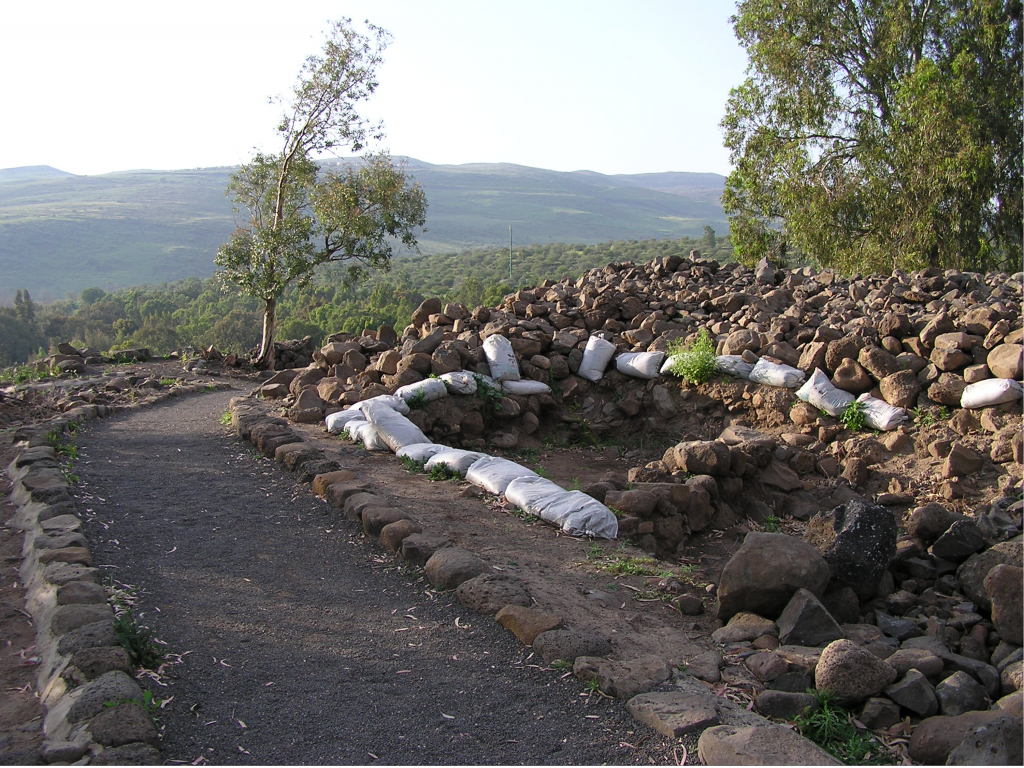
10.01.13.B. THE ARCHAEOLOGICAL SITE AT BETHSAIDA. The location of the fishing village of Bethsaida remained a mystery until the late 1990s. But the site archaeologist identified as Bethsaida is about a mile from the Sea of Galilee and has been dated to the time of the Assyrian invasion when it had a city wall. However, other scholars believe site has been incorrectly identified. Shown is a trail going through the active archaeological site at the so-called Bethsaida. Photograph by the author.
[1]. See Appendix 20 concerning currency values.
[2]. See Appendix 6 concerning Old Testament sacrifices and Jesus. Appendix 9 reveals the New Testament plan of salvation as presented in the Old Testament.
[3]. Barclay, “John.” 1:202-03.
[4]. Edersheim, The Life and Times of Jesus the Messiah. 468.
[5]. Among the writings of the Essenes, see Dead Sea Scroll fragments 1QS 2:21-22 and CD 13:1.
[6]. Mk. 6:41; 8:6; 14:22ff; Lk. 24:30; Jn. 6:11, 23.
[7]. Gilbrant, “Mark.” 173; Spangler and Tverberg, Sitting at the Feet of Rabbi Jesus. 81-83, 95-96. Compare with Bivin, “Jesus and the Oral Law’” 2:2, 8.
[8]. Gilbrant, “Mark.” 173; Spangler and Tverberg, Sitting at the Feet of Rabbi Jesus. 81-83, 95-96.
[9]. Weasel, “Blessed.” 1:201.
[10]. Bailey, Jesus through Middle Eastern Eyes. 66-68.
[11]. Babylonian Talmud, Berachot 35a.
[12]. Bivin, “Jesus and the Oral Law’” 2:2, 8.
[13]. Josh. 3:10; cf. Deut. 7:1; Acts 13:19.
[14]. Barclay, “Mark.” 158; Vine, “Basket, Basketful.” Vine’s Complete Expository Dictionary. 2:51.
[15]. Both terms are interchangeable for the same kind of basket. A large basket can be made from ropes or twigs; Vine, “Basket, Basketful.” Vine’s Complete Expository Dictionary. 2:51.
[16]. Barclay, “Matthew.” 2:127; Vine, “Basket, Basketful.” Vine’s Complete Expository Dictionary. 2:51.
[17]. See “Jesus, the Fulfiller of Selected Names of God” in Appendix 32 for additional attributes; Evans, Praying the Names of God. 123-24.
[18]. A “truss of hay” was the bedding material, often in a sack, that was placed under a sleeping blanket at night. It was the earliest form of a bed mattress. See Vincent, Word Studies in the New Testament. 1:85.
[19]. http://www.fordham.edu/halsall/ancient/juv-sat3eng.asp Retrieved August 21, 2013.
[20]. http://www.tertullian.org/fathers/juvenal_satires_06.htm Retrieved August 21, 2013.
[21]. New International Version Study Bible footnote on Mark 6:44.
[22]. Guinness, Mysteries of the Bible. 345.
[23]. Mt. 8:34; 9:1; 11:20-23; Lk. 6:31; 9:10.
[24]. Sherwin-White, Roman Society and Roman Law in the New Testament. 129-33.
[25]. See http://israel-tourguide.info/2011/01/10/earthquakes-history-archaeology/ Retrieved August 25, 2014. The Jordan valley is one of the most active earthquake zones in the world. There have been hundreds of minor earthquakes and major earthquakes have dammed the Jordan River repeatedly, sometimes for days, in 1160, 1267, 1534, 1834, 1906 and 1927. At such times, the river often redirects itself as a new riverbed is formed. This faultline is part of the Syrian-African Rift, the largest fault in the world. It runs from the east coast of Africa up the Red Sea, through the Gulf of Aqaba between Israel and Jordan, north through the Dead Sea and Jordan Valley, through the Sea of Galilee and on to Damascus and into Turkey.
[26]. Danny Ben-Tel, The Washington Post, April 1, 1998; Bethsaida, Israel National Parks brochure, 1998; “The City of Andrew and Peter: Bethsaida,” Bible and Spade 11:2 (Spring, 1998). 45-46.
[27]. Franz, “Ancient Harbors of the Sea of Galilee.” 35-36; Nun, The Sea of Galilee and its Fishermen in the New Testament. 15.
